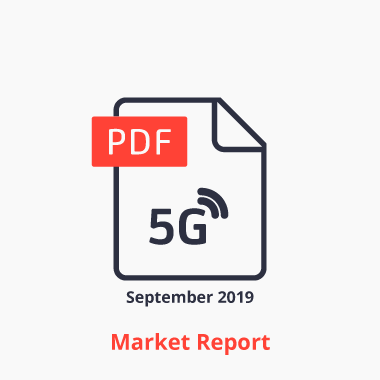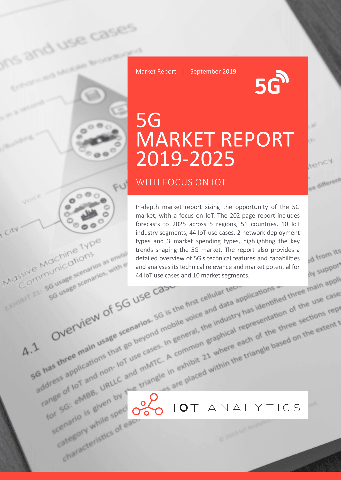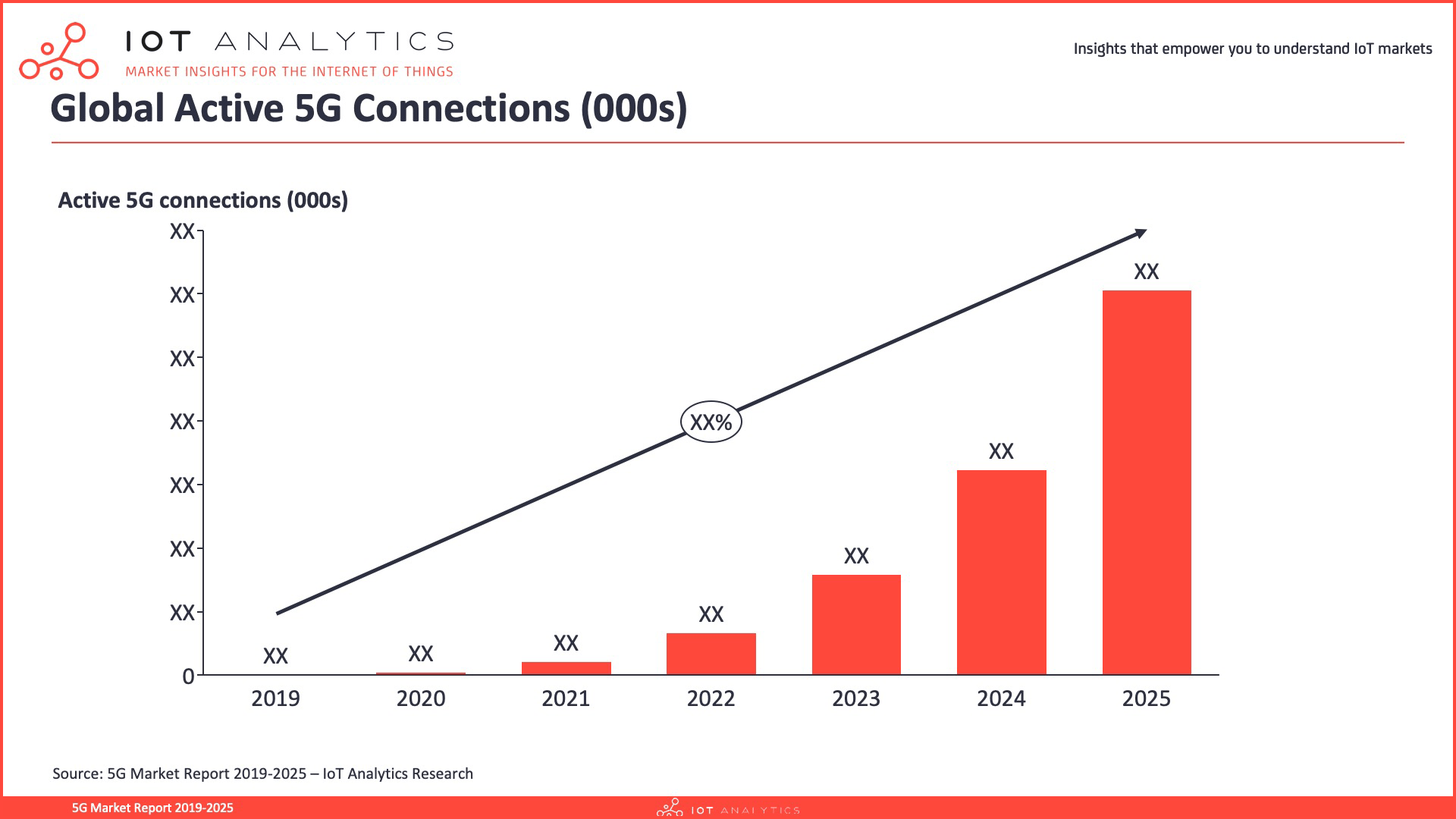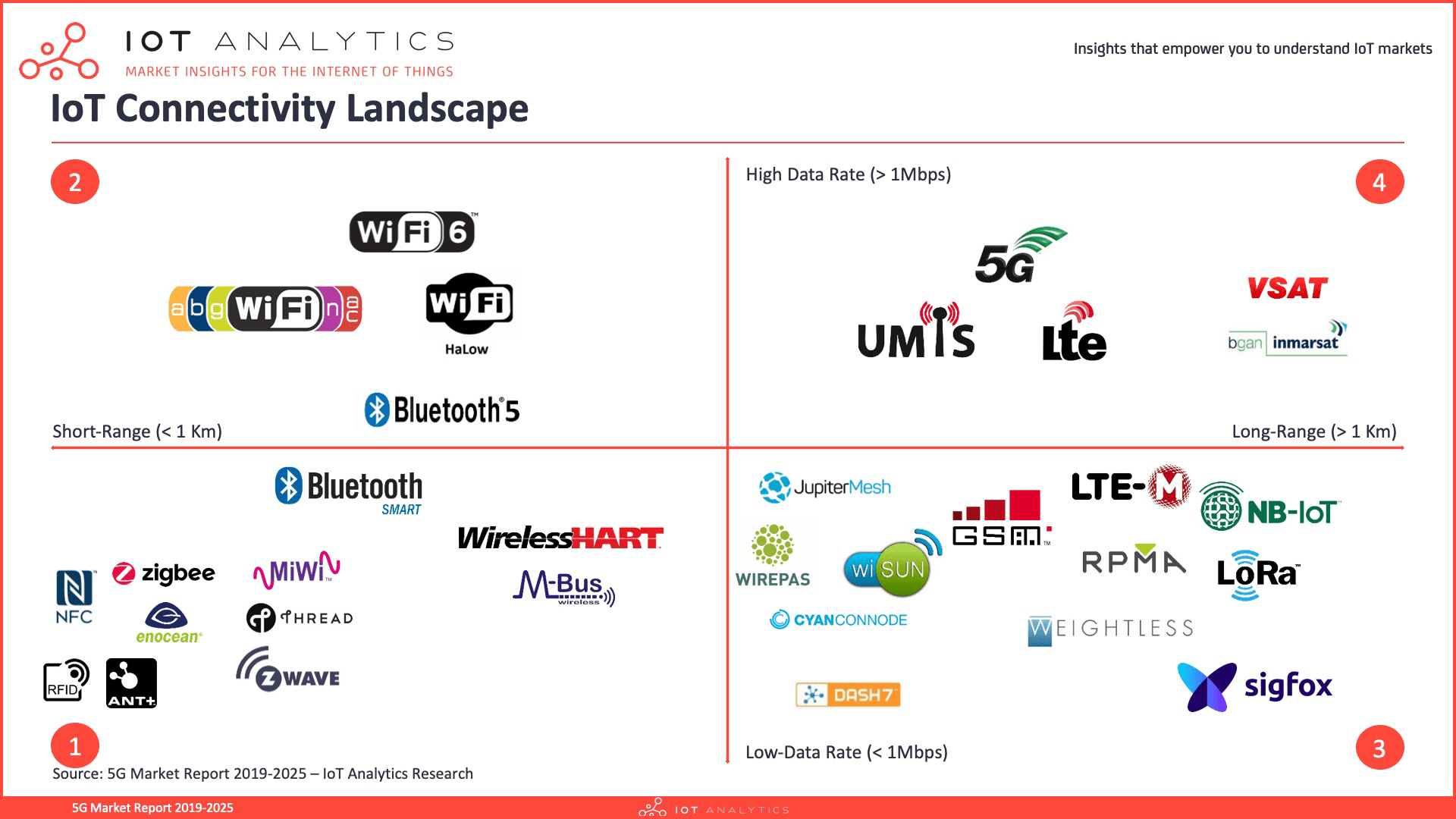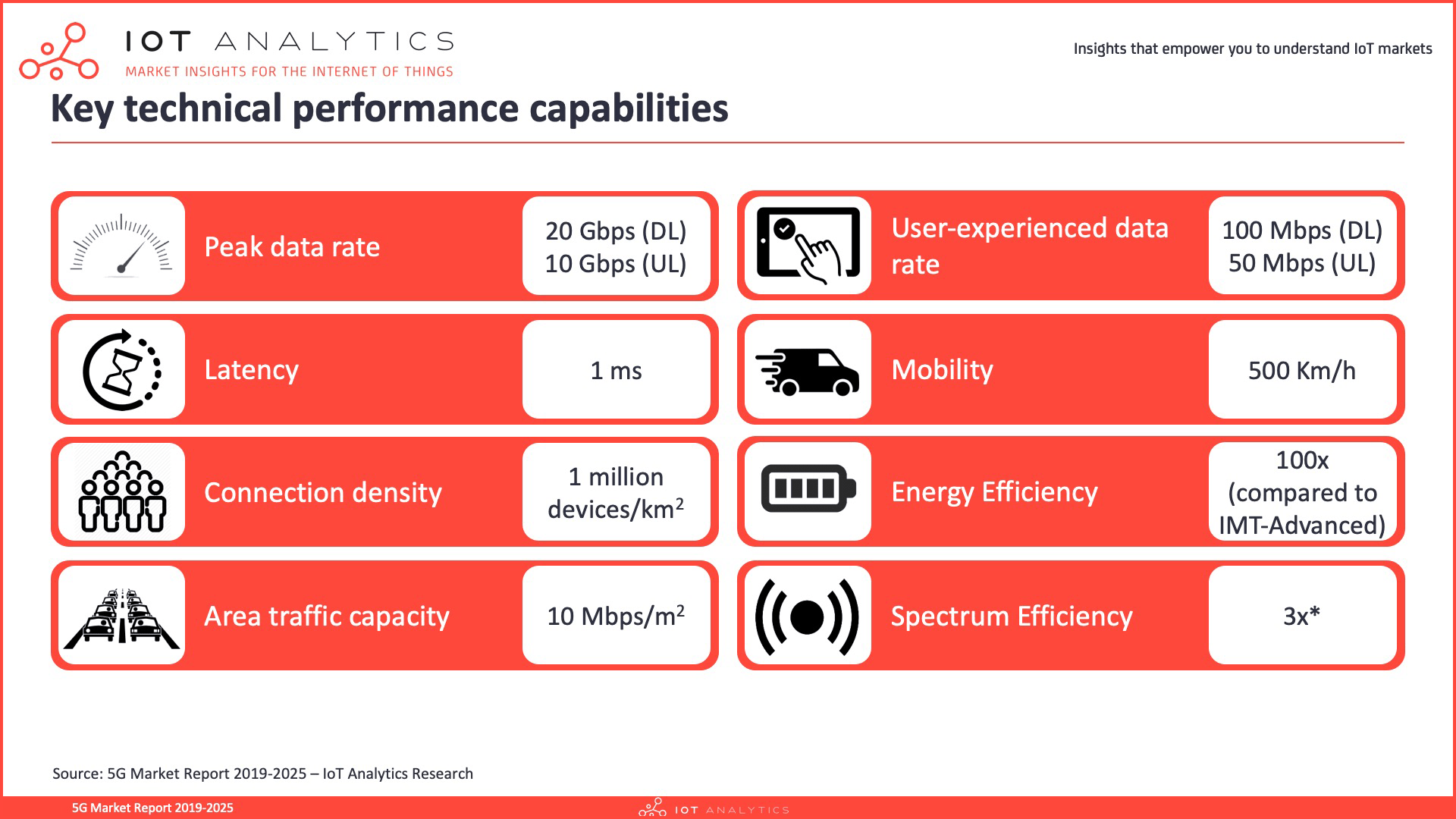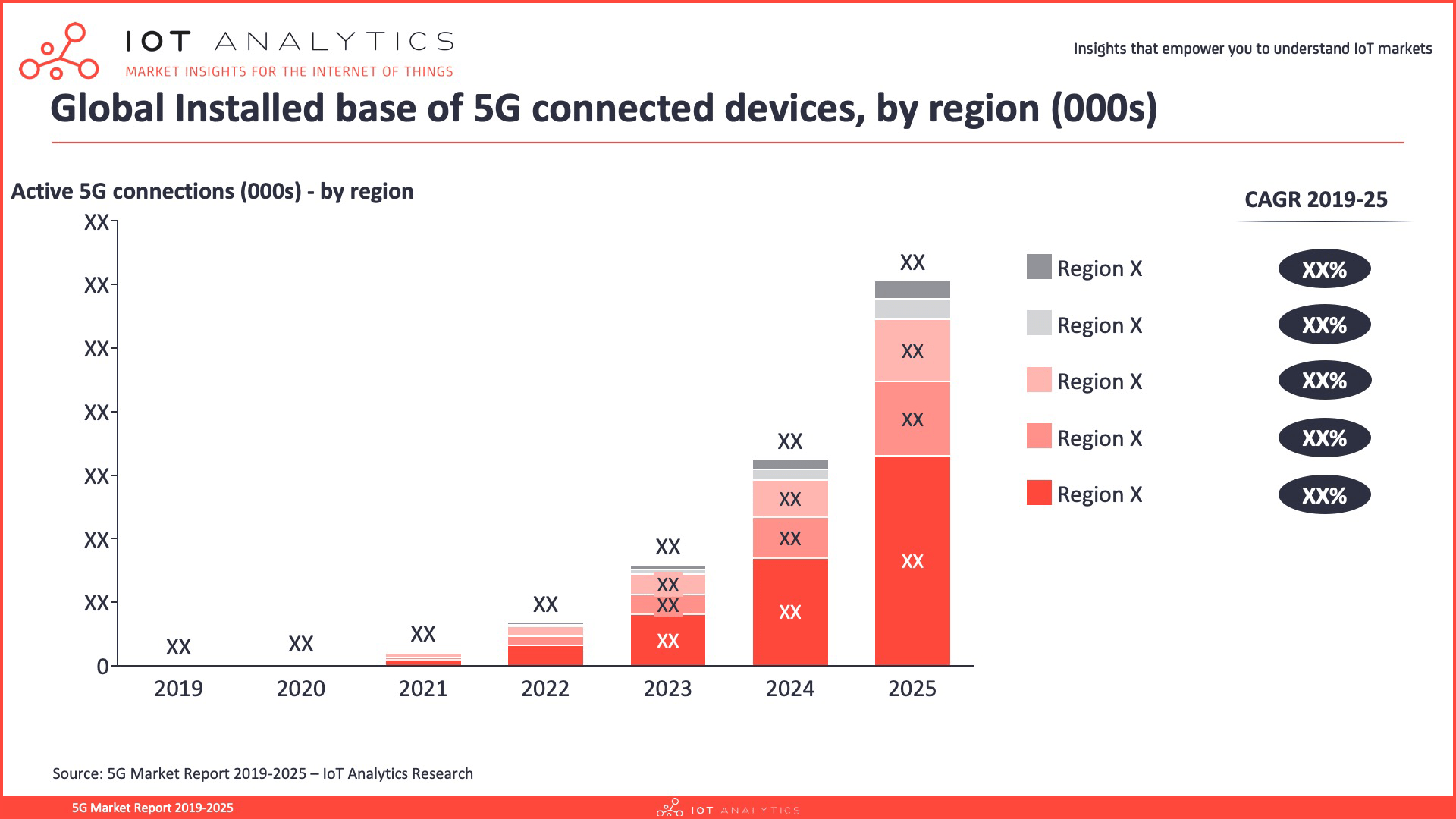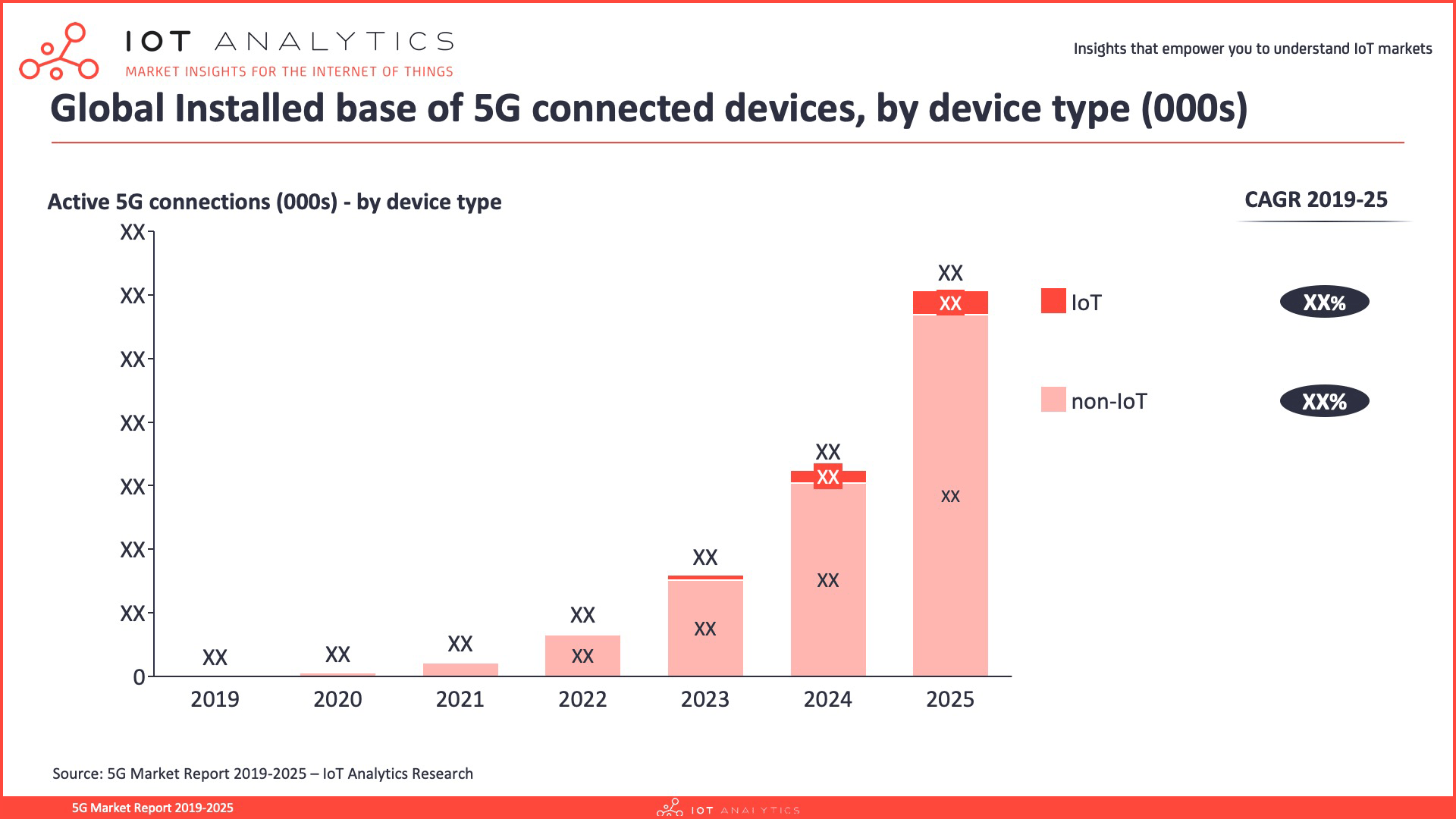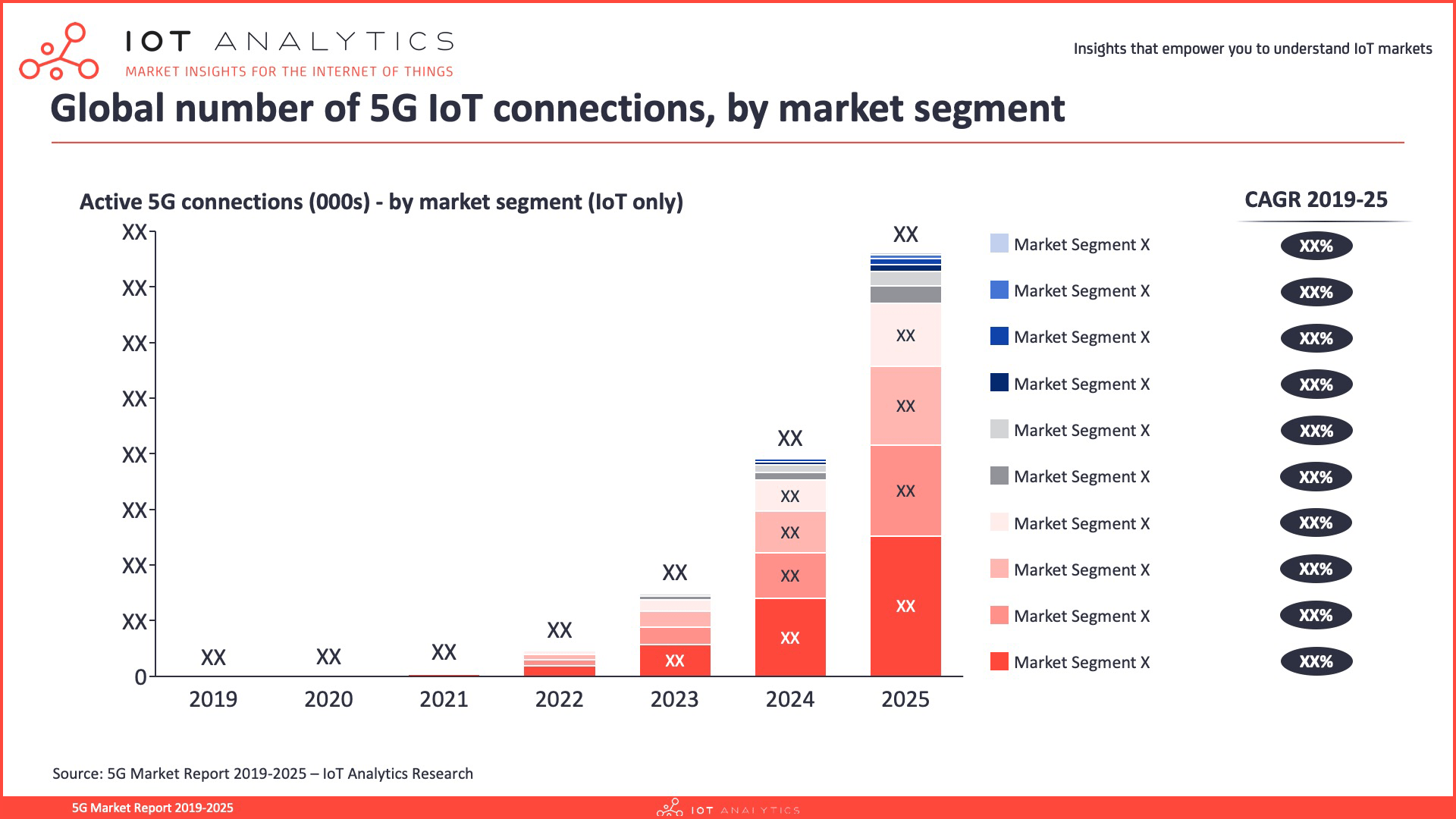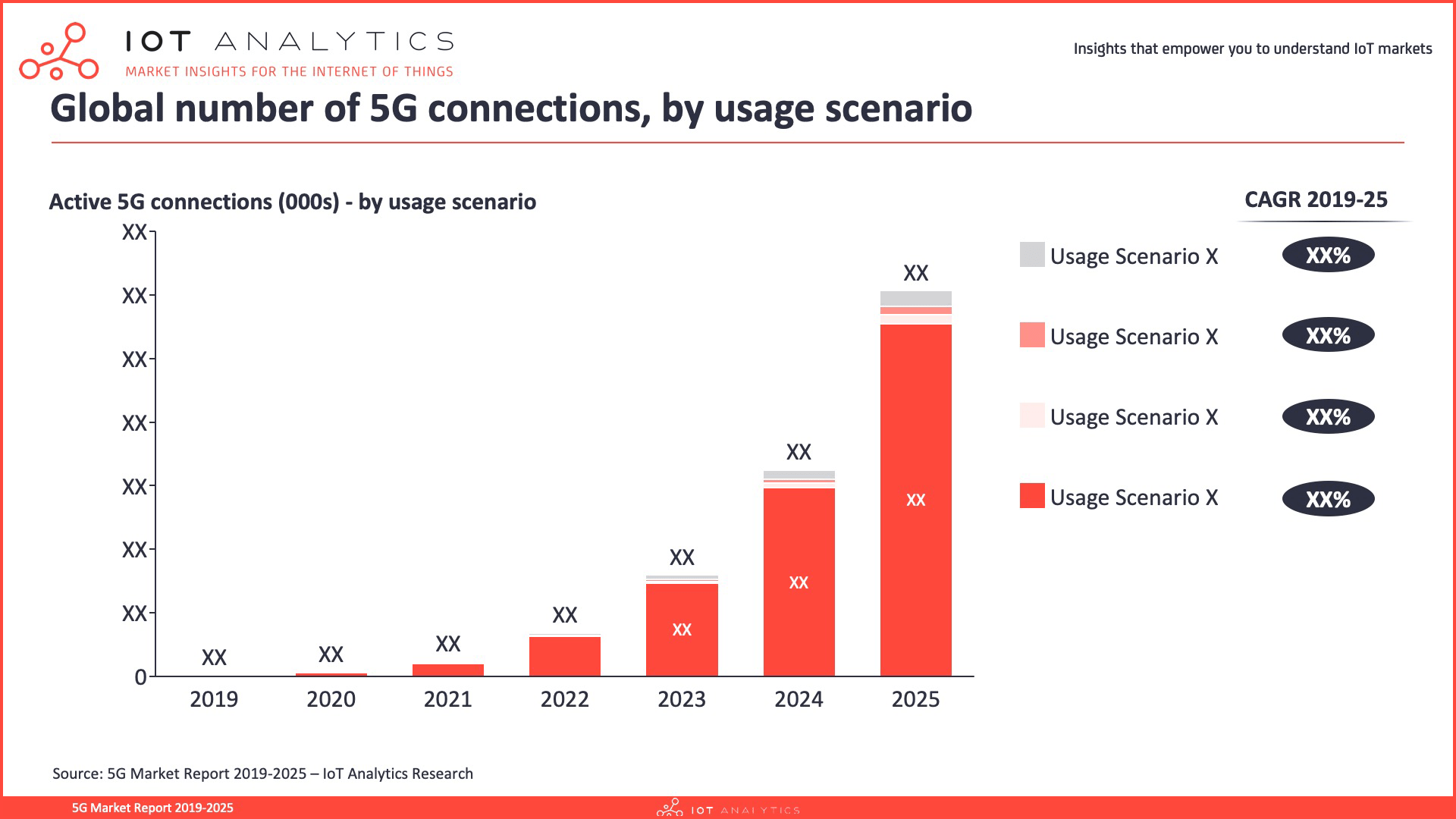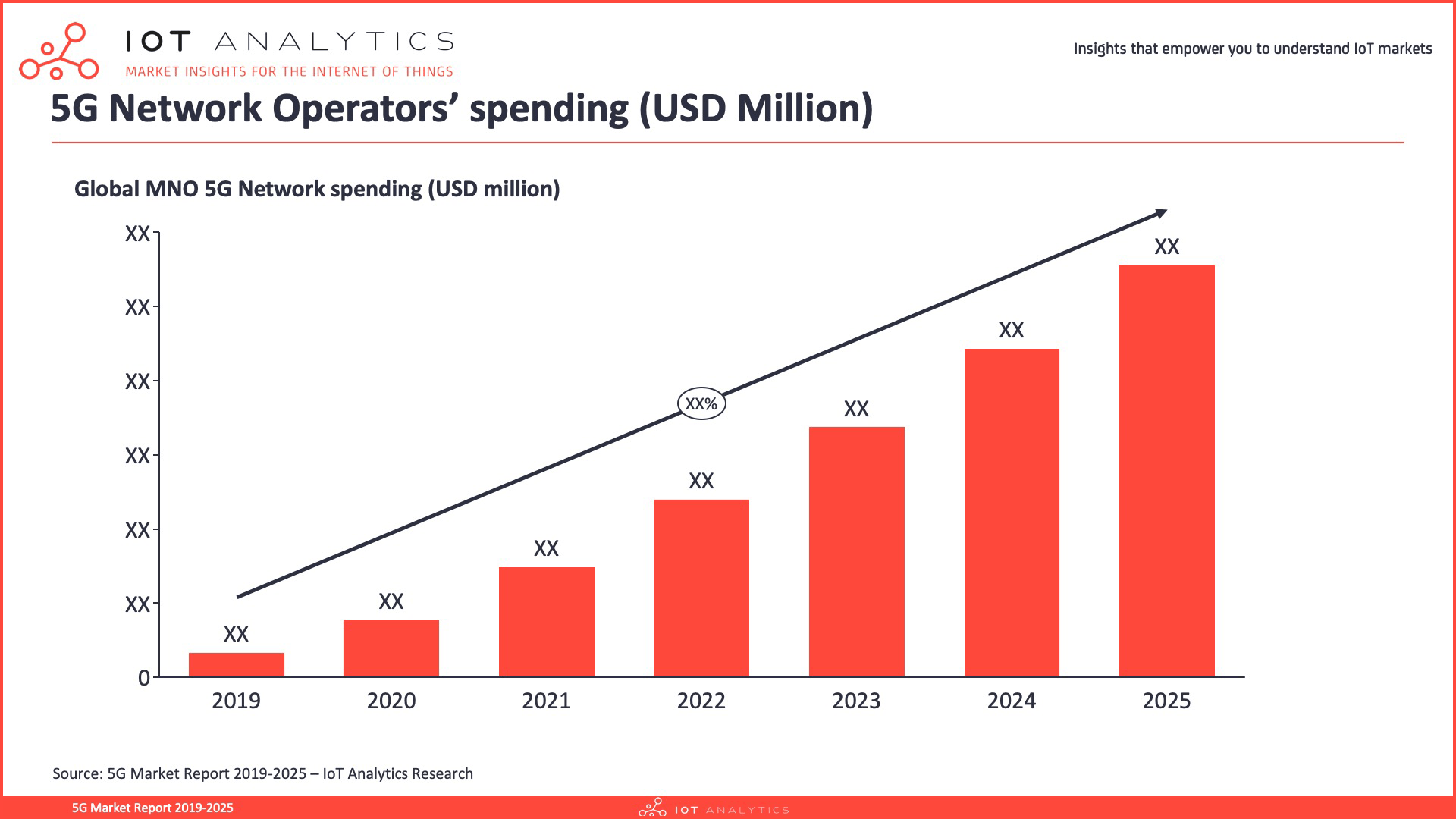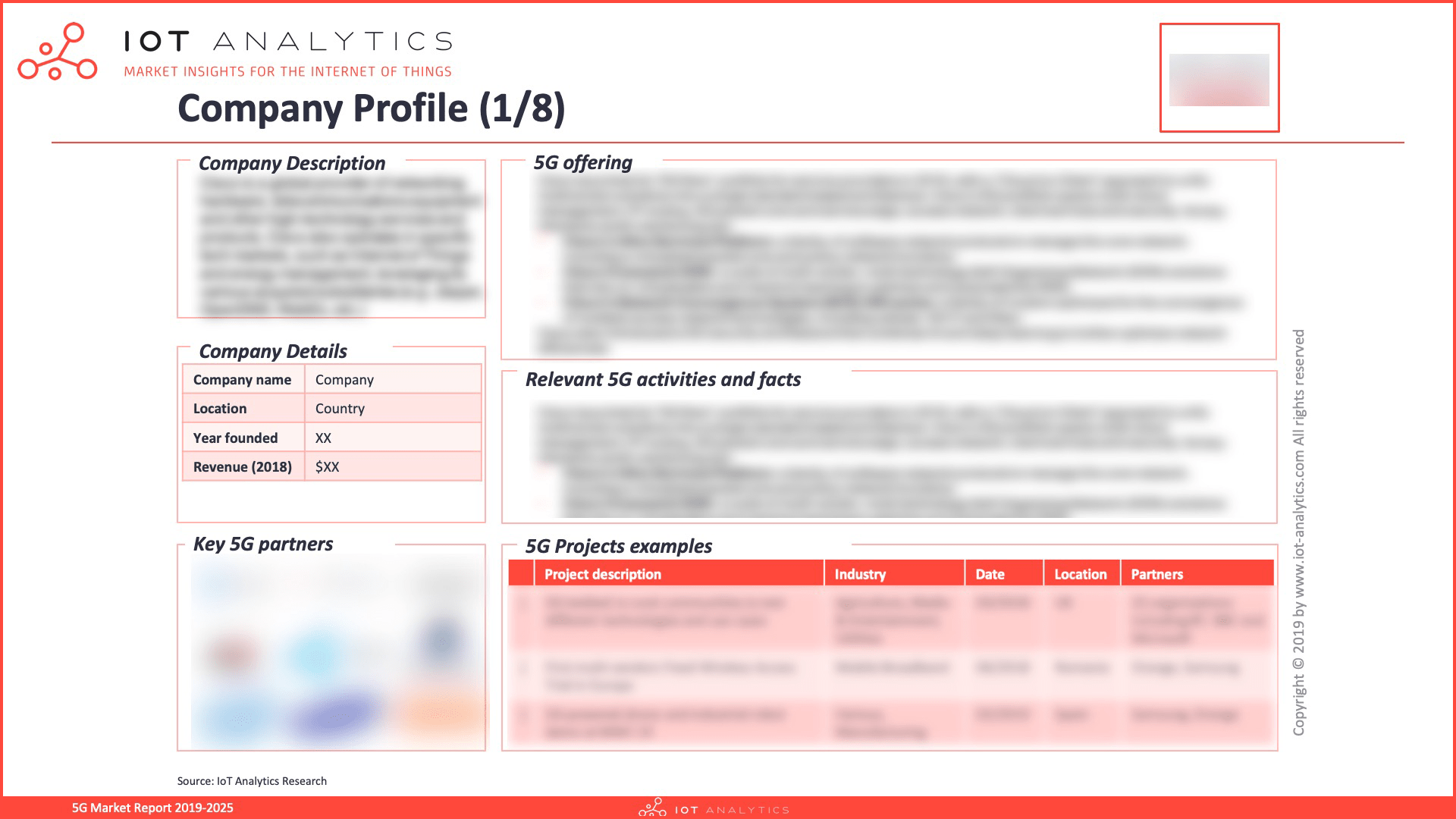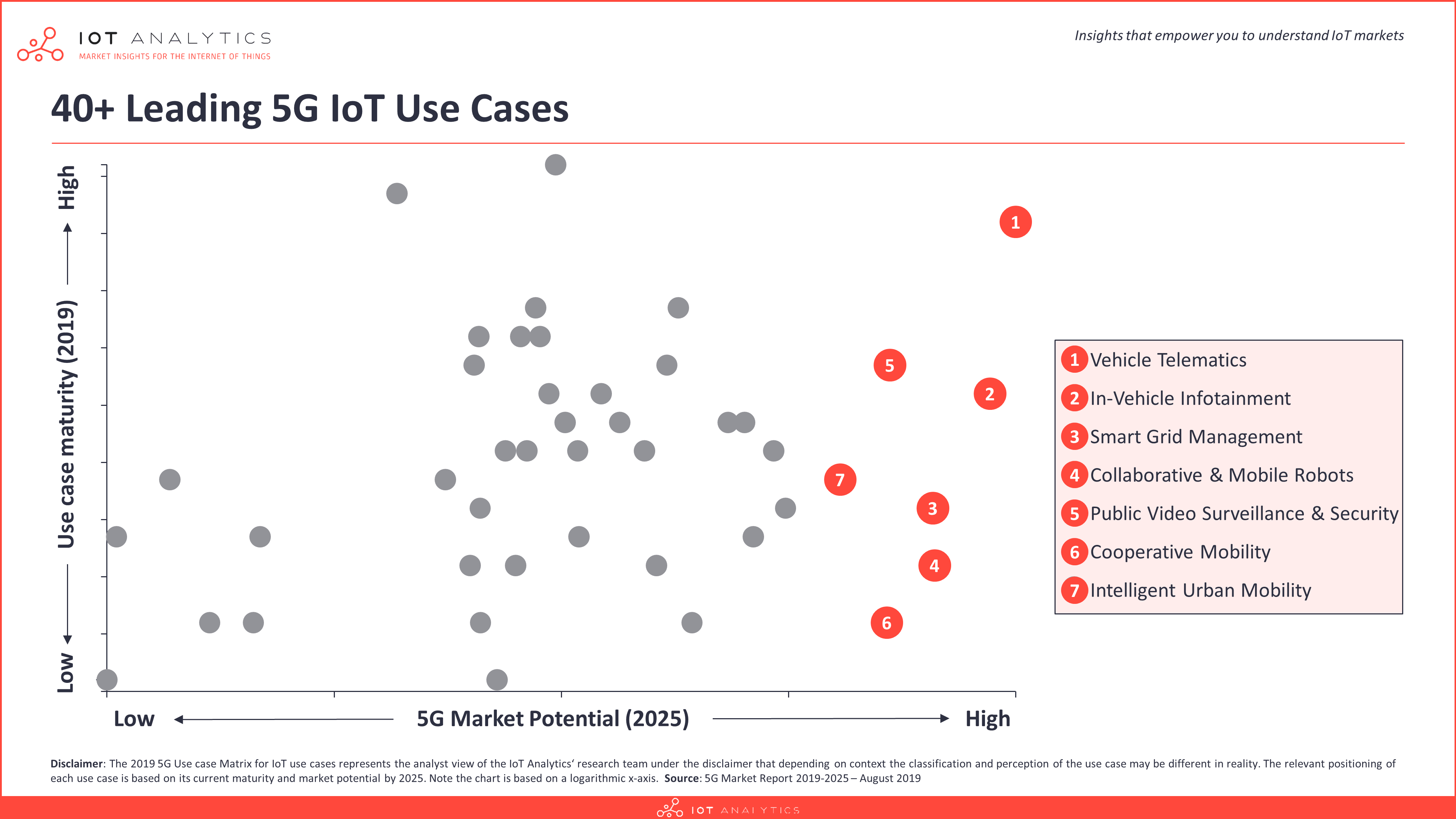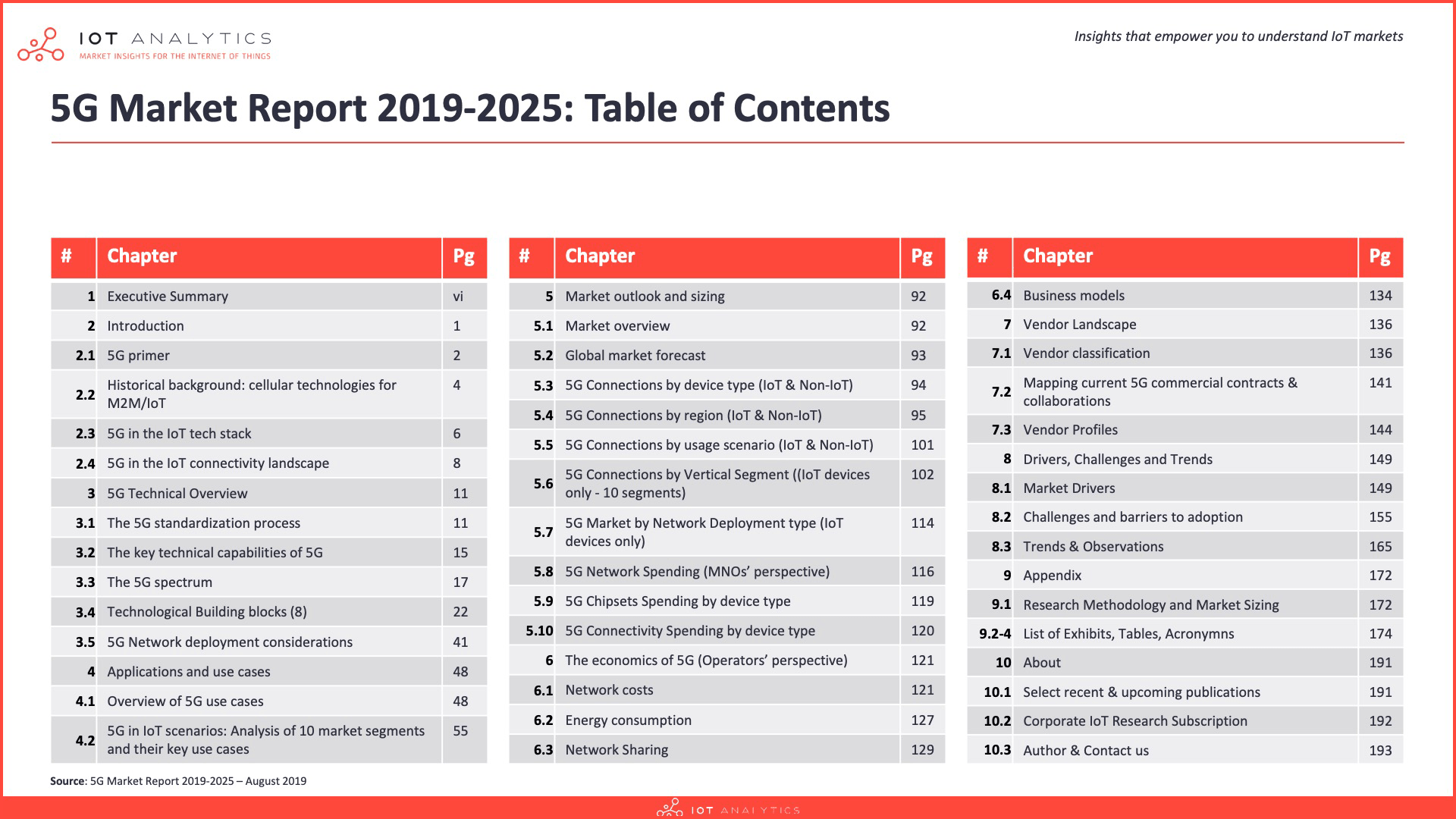Description
5G Market Report 2019-2025, with a focus on IoT
The 5G Market Report 2019-2025 is part of IoT Analytics’ ongoing coverage of IoT Connectivity.
The information presented in this report is based on extensive primary and secondary research, including 40+ interviews with 5G experts and end users conducted between January 2019 and September 2019.
Find out:
- How big the overall 5G & 5G IoT market are and how fast they are growing
- How the 5G IoT market is developing across 5 regions (51 countries) and 10 industries
- How the market spending is split across 3 types (chipsets, connectivity, network) and 2 network deployment types (public and private)
- Which 5G IoT vendors are market leaders (incl. 8 detailed company profiles)
- Which 5G IoT use cases have the greatest market potential and level of maturity (44 5G use cases in IoT)
- What are the main 5G IoT market drivers, challenges, and trends shaping the market
Questions answered in this report:
- What is the standardization process and licensed/unlicensed spectrum for 5G?
- What are the key technical capabilities of 5G IoT ?
- What are the technological building blocks of 5G IoT?
- What is the size of the overall 5G IoT market, by region, and industry?
- What types of hardware are used to achieve 5G IoT connectivity and who are the leading suppliers?
- What are the 3 main use cases of 5G IoT?
- How can 5G be used in IoT scenarios across different industries?
- Who are the main vendors in the 5G IoT market?
- What are some key drivers, challenges, and trends in the 5G IoT connectivity space?
Read the corresponding blog post here.
Available pricing plans:
See Terms & Conditions for license details.
Single User License
Market Report Single User License- 1 Named user (in your organization within the country of purchase)
- Complete market report in PDF
- Market Model Data, 29 data tables
- List of of 120+ 5G Connectivity Companies
- List of 20+ 5G Connectivity Projects
- 1 hr discussion with the analyst
Team User License
Market Report + Databases Team User License- 1-5 Named users (in your organization within the country of purchase)
- Complete market report in PDF
- Market Model Data, 29 data tables
- List of of 120+ 5G Connectivity Companies
- List of 20+ 5G Connectivity Projects
- 1 hr discussion with the analyst
Enterprise Premium License
Market Report + Databases Enterprise Premium User License- Unlimited users (in your organization within the country of purchase)
- Complete market report in PDF
- Market Model Data, 29 data tables
- List of of 120+ 5G Connectivity Companies
- List of 20+ 5G Connectivity Projects
- 1 hr discussion with the analyst
At a glance:
IoT Analytics estimates that by the end of 2019, the first year of commercial availability of 5G networks and smartphones, the number of connected 5G devices will be in single digit millions.
As operators worldwide proceed with network rollouts and more 5G devices enter the market, the global number of 5G connections is expected to exceed 1 billion in 2025, recording a 160+% CAGR in the 2019-2025 period.
With such a growth rate, 5G will be the fastest growing connectivity technology in that period.
This study explores the role of 5G in the IoT connectivity landscape and explores the economics of 5G from an operator’s perspective looking at spectrum licensing fees, RAN infrastructure costs, energy consumption, network sharing costs and new business models.
The 5G Market Report provides a comprehensive technical overview section on 5G, covering standardization process, spectrum analysis, and identifies the main building blocks for 5G connectivity.
Furthermore, the report classifies 8 key technical performance capabilities of 5G and takes a deep-dive into each capability with several examples.
The market sizing chapter of the 5G market report analyzes the global installed base of 5G connected devices and breaks down the number by region.
Market numbers are included for the global installed base of 5G connected devices by device type IoT and Non-IoT.
The 5G market report breaks down the global number of 5G IoT connections by 10 market segments (Agriculture & Environment, Automotive & Transportation, Buildings & Infrastructure, Consumer & Living, Energy & Utilities, Healthcare & Wellness, Industrial & Manufacturing, Retail & Financial Services, Smart City & Public Safety, Supply Chain & Logistics).
Forecasts for the number of 5G connections (IoT & Non-IoT) globally are given and broken down by usage scenario such as eMBB, FWA, mMTC, and URLLC.
A comprehensive vendor landscape analysis is given including 8 detailed company profiles, with a description of each companies’ main 5G offering, relevant 5G activities and gives a number of project examples.
Finally, the report outlines 4 market drivers, 5 barriers to adoption, 4 trends currently shaping the 5G market and provides a 5G IoT Use case matrix mapping use cases by maturity and market potential to identify the leading use cases.
Selected companies mentioned in the 5G market report:
AT&T, China Mobile, China Telecom, China Unicom, Cisco, Deutsche Telekom, Ericsson, Huawei, Intel, Korea Telekom, NEC Corporation, Nokia, NTT Docomo, Orange, Qualcomm, Samsung, SK Telekom, Softbank, Telefonica, Telstra, TIM, Verizon, VMWare, Vodafone, ZTE, and more…
Request a sample:
Request a sample of the report:

